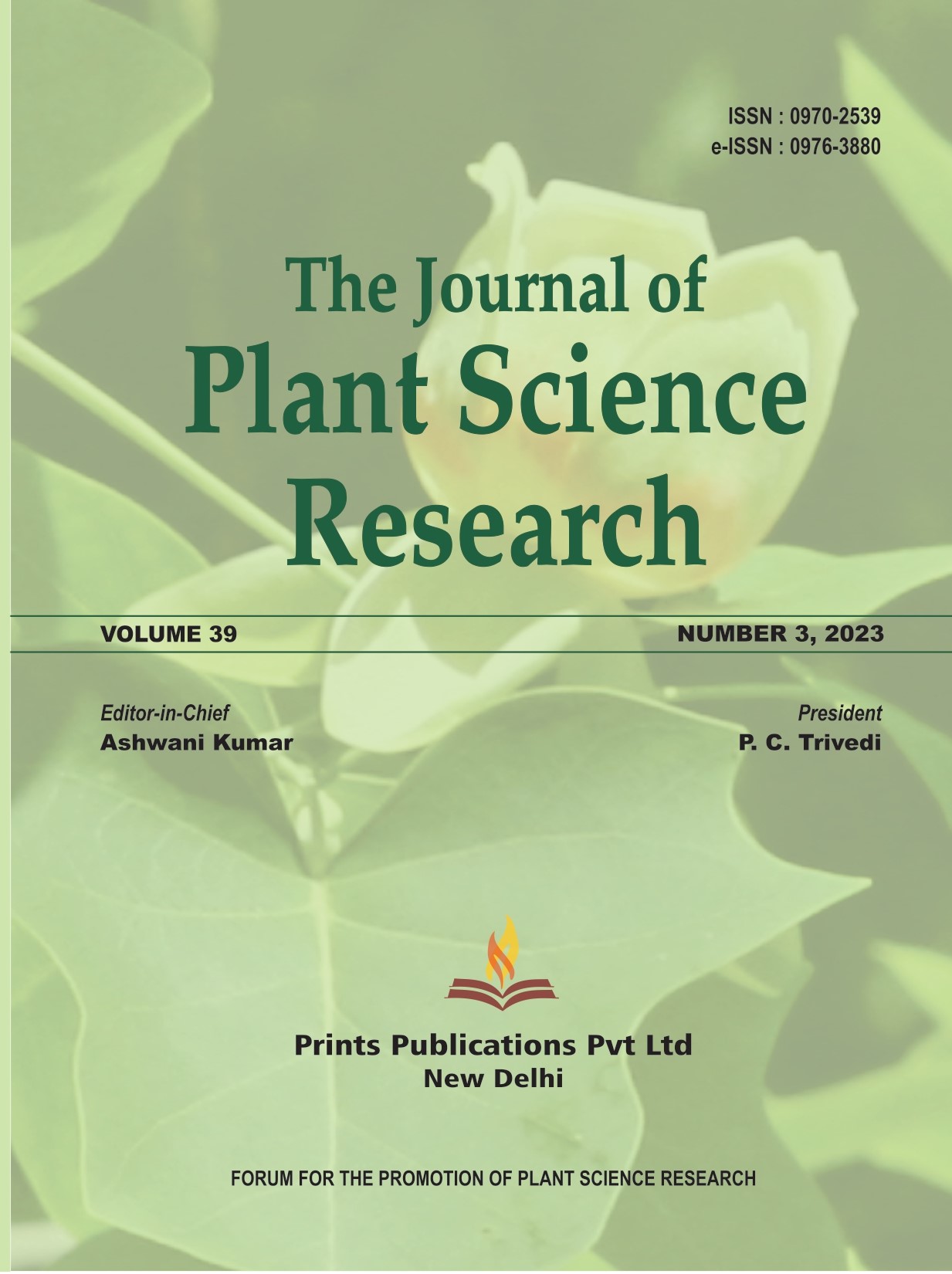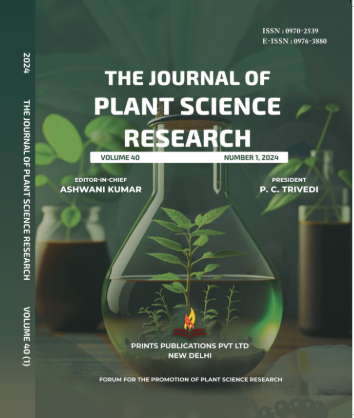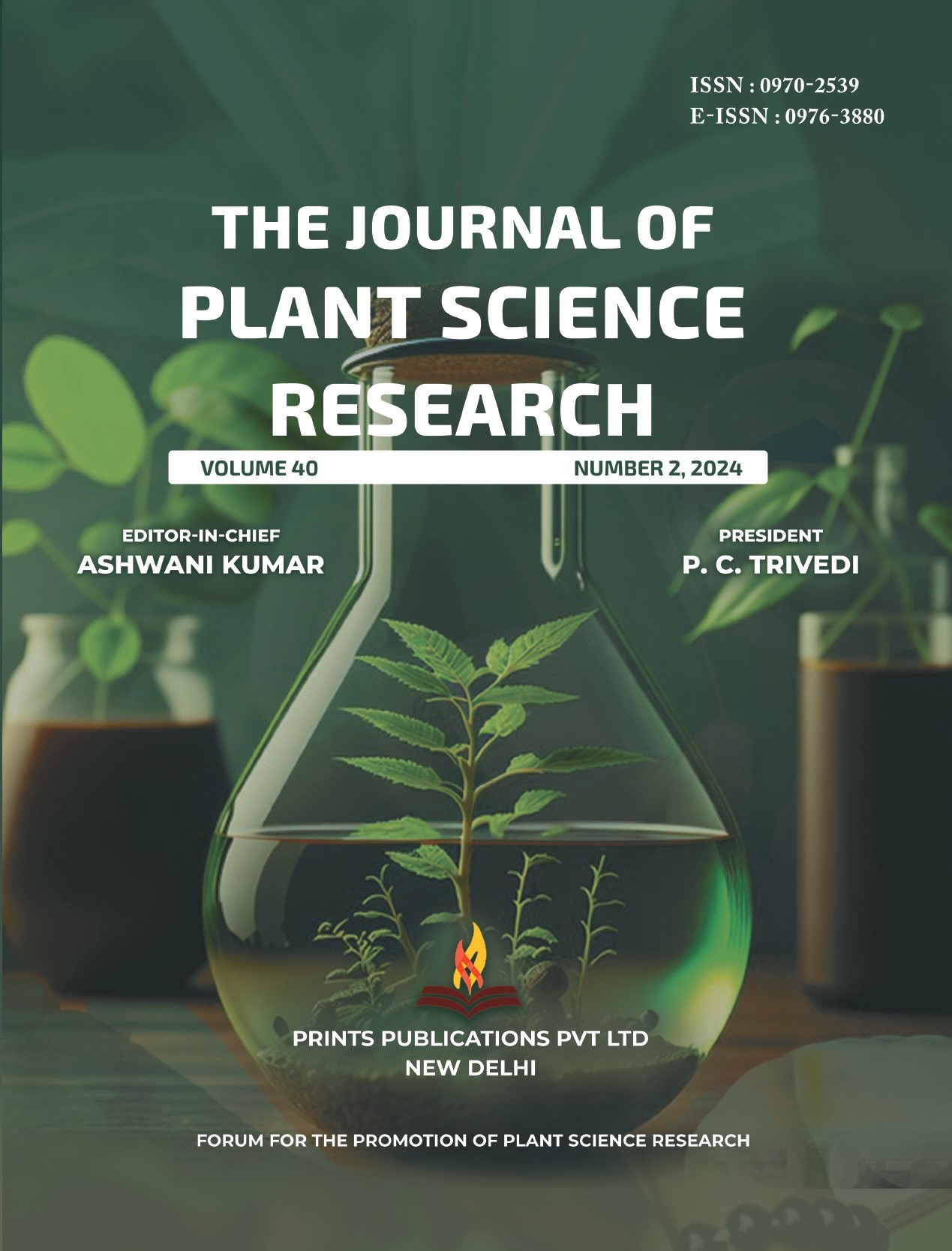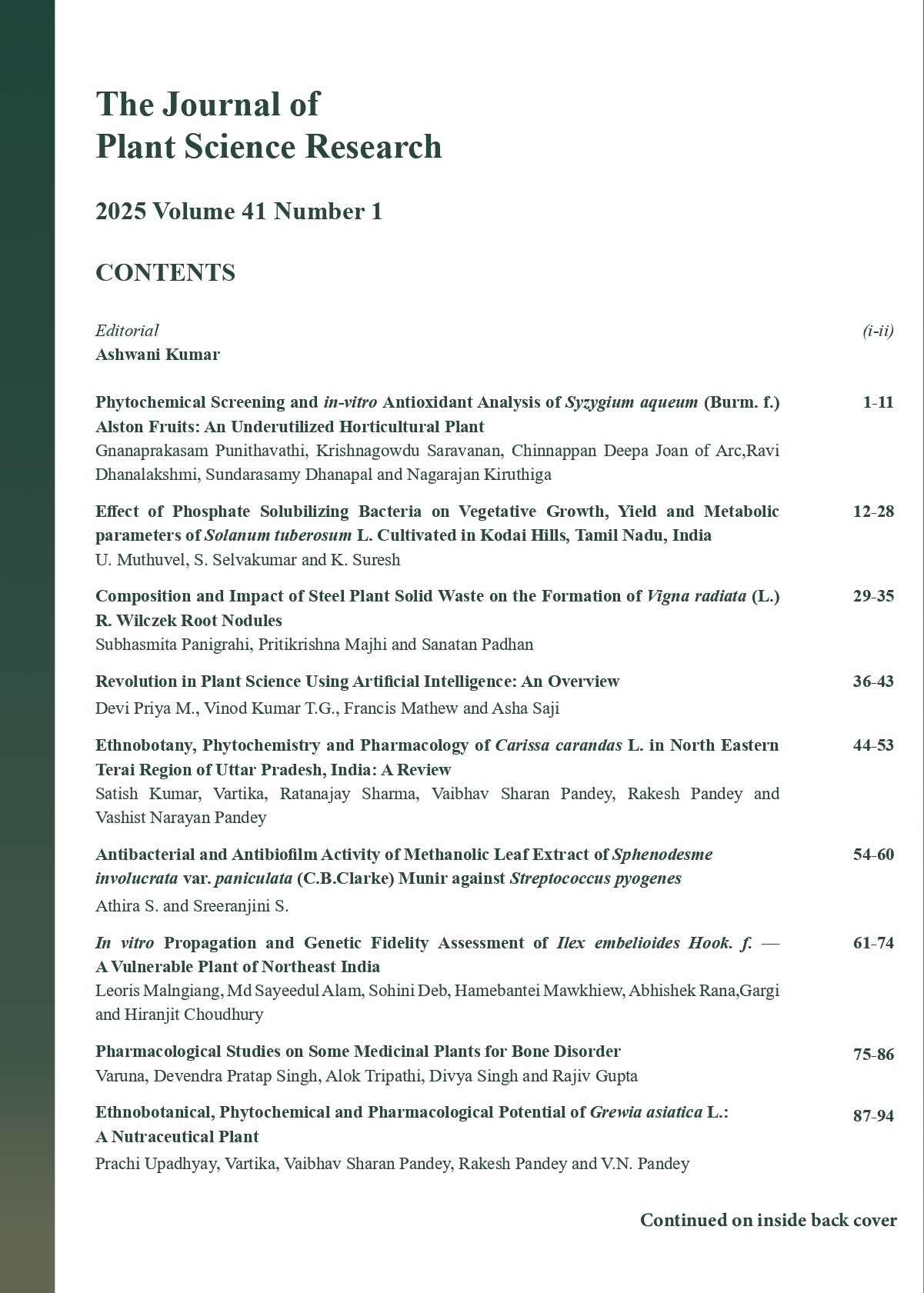The Journal of Plant Science Research - A UGC Care-Listed Journal
Published in Association with Forum For the Promotion of Plant Science Research
Current Volume: 41 (2025 )
ISSN: 0970-2539
e-ISSN: 0976-3880
Periodicity: Tri-annual
Month(s) of Publication: April, August & December
Subject: Botany
DOI: 10.32381/JPSR
Online Access is Free for Life Member
Identification and Development of EST-SSR Derived Functional Domain Marker (FDM) in Andrographis paniculata (Burm. F.) Nees: A Traditionally Important Medicinal Plant
By : Subhashis Das, Saurav Bhattacharya
Page No: 295-306
Abstract:
Andrographis paniculata (Burm. F.) Wall. ex Nees, also known as Kalmegh, is an important medicinal plant in the Acanthaceae family and has been widely utilised in Indian medicine for its therapeutic properties. EST-derived SSR markers have proven valuable in both diversification analysis and the creation of functional markers for assisted breeding due to their proximity to the protein-coding region. The current study involved the assembly of 708 EST sequences of A. paniculata, which represented various plant elements such as leaves, stems, and roots. This assembly process yielded 56 non-redundant perfect SSR sequences. The most abundant were the dinucleotide repeats (16; 28.57 %) followed by trinucleotide (15; 26.79 %), mononucleotide (13; 23.21 %), tetranucleotide (6; 10.71 %) and pentanucleotide (6; 10.71 %) SSR repeat sequence. The most abundant repeat was (AT)n followed by (AG)n in dinucleotide. Among the trinucleotide repeats, the most abundant repeat was (AAT)n followed by (ATC)n, whereas (AGC) n and (CCG)n showed equal frequency in distribution. Assembled SSR sequences were assigned to 150 unique functional domain markers using the InterproScan program, the most significant were Fructose bisphosphate aldolase class-I, chlorophyll A-B binding protein, cysteine-rich domain, 2Fe-2S ferredoxin binding, Helicase, C-terminal, cytoplasmic deadenylase NOT2/NOT3/NOT5, C-terminal and plant transcription factor. The functional annotation results of the selected SSR sequences, obtained using BLAST2GO, demonstrated their relationship with many significant molecular functions (MF), biological processes (BP), and cellular components (CC) in A. paniculata. Successfully, Insilco PCR amplification was performed using primer pairs that covered 12 SSR-EST contigs (21.4%) and 20 SSR-EST singletons (35.7%). The EST-SSR primers were validated using standard PCR amplification reaction with genomic DNA samples obtained from wild individuals of A. paniculata. The results demonstrated the successful amplification and presence of polymorphic bands, indicating the usefulness of the developed functional EST-SSR markers in A. paniculata. The current results reveal a novel set of SSR markers that are strongly linked to various functional domains. These markers can be utilized in future research on the genetic diversity across A.paniculata diversity analysis, as well as in marker-assisted breeding.
Authors:
Subhashis Das: Research Scholar, Department of Biotechnology, Techno India University, Kolkata, West Bengal,
Saurav Bhattacharya: Associate Professor, Department of Biotechnology, Techno India University, Kolkata, West Bengal,
DOI: https://doi.org/10.32381/JPSR.2025.41.02.10






